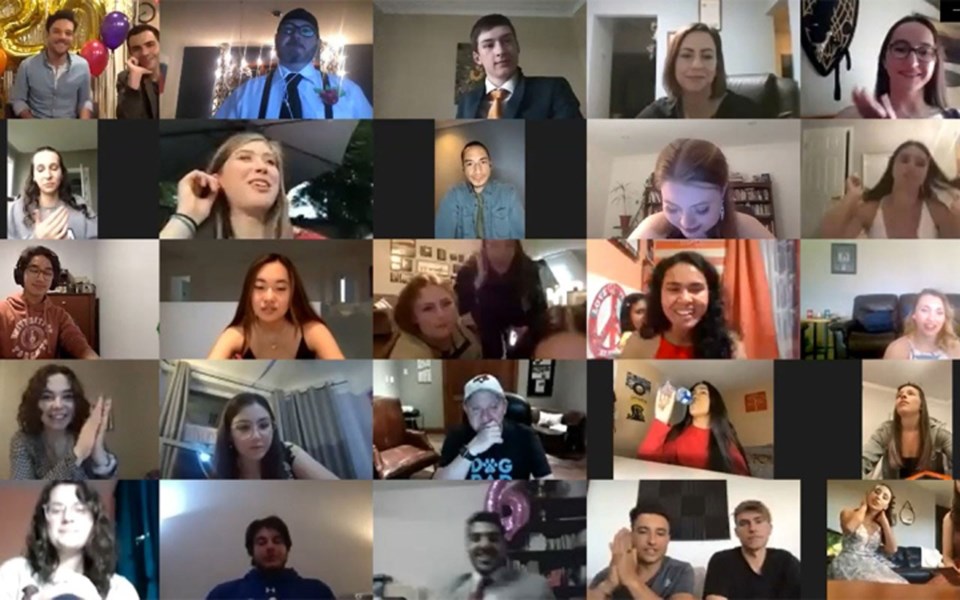Schools are organizing proms and graduation ceremonies on home screens to celebrate an important life milestone—but nothing virtual can really replace crossing the stage in front of peers, teachers and family to receive a high school diploma.
It’s just one important rite of passage young people are missing out on during the COVID-19 pandemic with large gatherings banned, schools largely shut down and travel restrictions in place.
Other losses child and youth psychologist Dr. Gabriela Ionita has heard about from her young clients is missing out on summer jobs and significant vacations, spending time with friends and the cancellation of competitions they’ve trained for all year.
How they survive these losses will depend on their prior resilience and coping skills, Ionita said.
In every crisis humans have faced, some people develop post-traumatic stress disorder or acute stress disorder from a crisis while others don’t, Ionita explained.
Those who have good coping skills or who reach out for support during this crisis will do better, while those who dwell on the things that aren’t going well and making them sad will continue to struggle.
“It’s really how resilient were they prior to this situation because resilience doesn’t come from going through a crisis rather from having coping skills to deal with the crisis,” Ionita said.
For children experiencing mental health, expressing it in words is much more difficult than for adults or even teens, Ionita explained, making it harder to pinpoint what children are experiencing.
Language needs to be adjusted to be at their level.
At the age of five or six, anxiety can look like ADHD, making it harder to figure out what is going on with children.
But Ionita said if something is interfering with a child’s quality of life and they can’t do what they want to do and they’re retreating, these are clear signs “something is going on with this particular child,” Ionita explained.
The most common mental health issues in children are anxiety, ADHD, conduct disorder (patterns of disruptive behaviour) and depression.
One in four youth and children will have anxiety high enough that they need professional help, Ionita pointed out, but only 31 per cent of children actually get the mental health support they need.
For 11-year-old Owen, who struggles with different types of anxiety, COVID-19 has been a “childhood anxiety dream” living in his bubble, explained his mother Lindsay Goulet. But getting back to school and into the new normal is going to be a “grind.”
She recently took him out to a store for the first time in a while and it was eye-opening to see the plexiglass, the lines on the floor and arrows, marking changes to how people socially interact.
“He sees the changes in the real world and then he has to process that,” Goulet said.
“It’s a matter of slowly integrating him back and having lots of conversations to explain beforehand what (he) should expect to see.”
Goulet won’t send Owen back to school until September and she will spend the summer preparing him for re-entry, with counselling, breathing exercises and imaging—step-by-step imagining what going back to school will be like and what he might anticipate.
To prepare for going back to school full-time in September, anxious children need to start building up the skills now, and not in the fall when it’s time to go back, Ionita said.
“If kids are struggling to return to school now in June, that is not going to magically change in September,” Ionita said.
A big part of that is helping children understand why they want to avoid going back to school and the fact that avoidance will make it harder.
“(We have to) help teach children when we feel afraid, we want to approach rather than retreat, and we do it in small steps, then maybe by September, they’ll be ready face the vastness of school,” Ionita said.
“But they have to build the skills up for that.”
Avoidance is what can exacerbate pre-existing anxiety, and that is made so much easier during the pandemic.
Ionita said her socially anxious young clients have been interacting with friends online, but they have not had to interact with the rest of the world and the current state of society isn’t forcing them to make outside connections.
“The more we isolate, the worse our mood gets, especially for people who are vulnerable,” she added.




